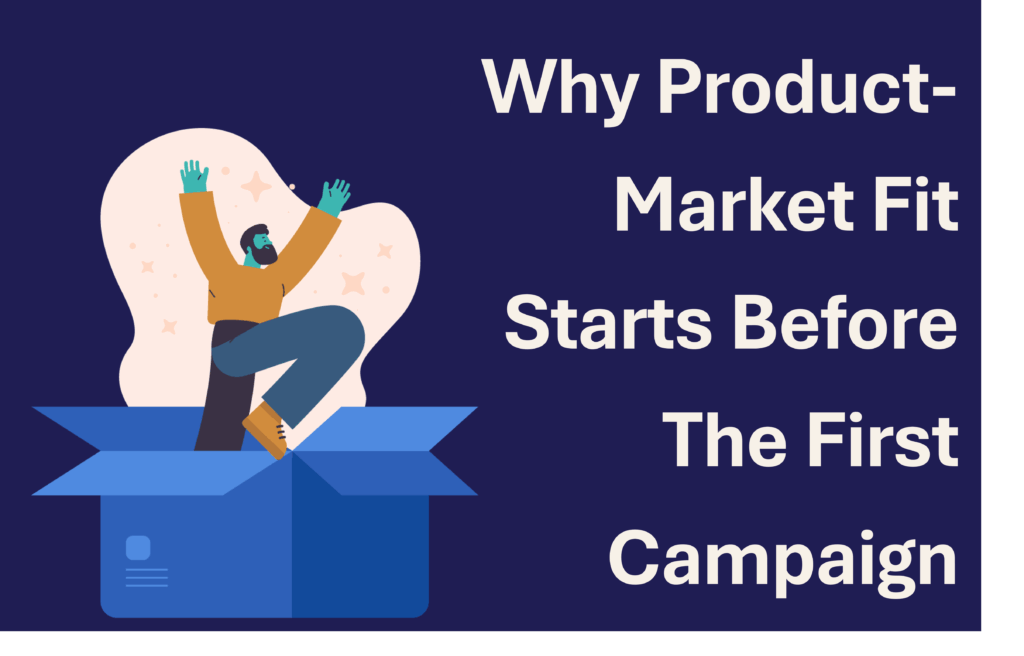You ever try to use a website and think, “Who designed this, and why do they not want me to complete the task I came here for?” Same here. That’s why user research isn’t just important. It’s essential.
I see so many marketers skip this step, thinking they already understand their audience. But guessing is expensive. Bad campaigns, low conversions, wasted budget… it all traces back to not knowing what real users actually need.
So let’s break it down. What user research is, why it matters, and how you can use it to make smarter decisions instead of tossing ideas into the void and hoping something sticks.
A Hard Lesson in User Research
I learned this one the painful way.
At a young startup, I was leading SEO and content. I had built the website from scratch and felt good about it. It had been live for six months. Then we brought on a product marketer who immediately started running interviews and surveys.
About a month later, we had a big marketing meeting. Thirty people in the room. That product marketer presented their findings.
It wasn’t pretty.
Users were confused. They didn’t understand the layout. They had trouble navigating the site. They thought there was too much white space. Sitting there, hearing that feedback in front of the whole team, was rough. And of course, the findings didn’t stay in marketing. They were shared company-wide.
But once I got over the sting, I had to admit… they weren’t wrong.
So I made a change. I moved my desk closer to the product marketing team. I joined their surveys. I started talking to users myself. And everything shifted.
Now I wasn’t just watching heatmaps. I was having real conversations. Hearing frustrations. Understanding how people actually experienced our site.
One of the biggest takeaways? Trust and clarity were lacking. People didn’t feel confident in our content. They weren’t sure where to click or what to expect. So I rewrote key copy, redesigned article layouts, improved calls to action, and cleaned up the structure.
After those changes, I ran tests. Revenue per visitor increased by 220 percent in under six months.
That was the turning point. Ever since, I’ve built user research into my process from the start. I listen to sales calls. I read every bit of feedback. I try to stay close to the real voices of our users. Because guessing is not a strategy. Listening is.
What Is User Research?
User research is the process of gathering insights about your audience’s behaviors, needs, motivations, and pain points through observation, direct feedback, and data analysis. It’s aUser research is the process of learning what your audience actually wants and needs. It’s about going beyond assumptions. Instead of relying only on analytics or keyword trends, you hear directly from the people using your product or reading your content.
It includes interviews, surveys, behavior analysis, and anything else that helps you understand the “why” behind user actions.
Why this matters:
- You run better experiments. You’re solving actual problems, not just testing random ideas.
- Your conversion rates improve. Once you know what’s getting in the way, you can fix it.
- Retention increases. People stick around when they feel understood.
- You use resources more wisely. Fewer wasted campaigns, more focused improvements.
Without user research, teams often optimize things that don’t matter. A cleaner design means nothing if people still don’t trust your content or know where to go next.
The Three Types of User Research Marketers Should Be Doing
User research isn’t one thing you do once. It’s a continuous cycle. There are three types, and each plays a different role.
1. Exploratory Research: Finding the Problems
ExplorThis is the starting point. You’re trying to discover pain points and unmet needs. It’s about identifying the big issues.
Use these methods:
- Customer surveys: Ask open-ended questions. What’s confusing? What’s missing? What do they wish existed?
- Usability testing: Watch someone use your site. You’ll see issues you never expected.
- Heatmaps and session recordings: See where people click, scroll, and drop off.
How often? Do this before big changes, like a redesign, or once or twice a year to stay current.
2. Focused Research: Digging Deeper
Once you’ve identified broad issues, focused research helps you zero in on specific problems. This stage is about refining your understanding of particular obstacles and finding taOnce you’ve identified an issue, this phase helps you understand it more precisely. You’re narrowing in on what’s really going wrong.
Best methods:
- Card sorting and tree testing. Great for fixing navigation and structure.
- Analytics deep dives. Where are users dropping off? What pages aren’t converting?
- Customer interviews. These reveal motivations that numbers can’t.
How often? Ideally quarterly. More often if your product is changing quickly.
3. Validation Research: Testing Solutions
Now that you’ve made changes, this research tells you whether they actually worked. It’s all about confirming you’re on the right track.
Try these methods:
- A/B testing. Compare the new against the old and see what moves the needle.
- Prototype testing. Share early concepts before you build anything.
- Copy testing. Make sure your messaging lands with the right audience.
How often? Continuously. Any major change deserves a test before it goes live.
Stop Guessing, Start Listening
User research isn’t a bonus feature of a good marketing strategy. It is the strategy.
The best experiments are grounded in real feedback. The best campaigns address real concerns. The best websites are built for real people, not for the marketer’s personal taste.
So before your next sprint or campaign, pause and ask yourself: Am I solving a real problem, or just reacting to a hunch?
If you’re not sure, go find out.
Because the only thing worse than launching a bad idea is launching one that never had a shot to begin with.




